With the audiobook now out for “The Digital Transformation Roadmap”, and many folks teaching the book in college classes, I wanted to share a PDF version of the book’s tools for all my newsletter subscribers.
About the Tools
I include 8 strategic planning tools in the book. These are meant to give you the practical means of applying the DX Roadmap framework yourself.
These tools do not offer “the answers” to digital transformation. Instead, they are designed to pose the crucial questions that will guide you to the right answers for your particular organization.
Each tool should be applicable whatever your role in digital transformation (DX)—whether you are the CEO, directing digital strategy for a business unit, leading a function like Marketing or HR, or part of a team designing a new digital product or experience. This is because for DX to truly work, it must happen at every level of the organization, and in every business function.
Each of these 8 tools is based on my experience advising firms and has been iterated and tested with organizations around the world and in different industries.
But the point is that you do not need me to put them to work. I hope you find them helpful!
**A short description of each of the 8 tools follows below…**
Get the Download Link
Subscribe today to the “David Rogers on Digital Newsletter” and you will receive a welcome email that includes a link to download a PDF with 8 strategic planning tools from “The Digital Transformation Roadmap.”
QUICK POLL: Tutorials?
I am planning to offer one or more online “tutorials” that dive into the practical application of a tool from the book.
Let me know: which would you be most interested in?
TOOL: Shared Vision Map
Explained in: Chapter 3
The Shared Vision Map is designed to help you craft a shared vision that is unique to your organization and that can align employees, investors, and other stakeholders behind your DX.
The Map will help you to define four critical elements of your shared vision for DX:
Future landscape—where do you see your world and your business context going?
Right to win—what are the unique strengths and limits of your organization that will define the role you play?
North Star impact—what impact do you seek to achieve in the long term, and why?
Business theory—how do you expect to capture value and recover the investments you make for the future?
The Map is meant to be used to define your shared vision at any level of the organization where you are working. That could be the shared vision company-wide, or it could be a shared vision for DX efforts within a single business unit, within a function (like marketing, HR, or supply chain), or the vision of an individual team.
TOOL: Problem/Opportunity Statements
Explained in: Chapter 4
Problem/Opportunity Statements help you define your strategic priorities and generate ideas for innovation at every level of your enterprise.
Each P/O statement should describe a clear strategic opportunity or problem for the business or its customers.
Because it is meant to spark multiple new ideas for innovation, a P/O statement should say where you will seek to create and capture value (the desired outcome), without deciding in advance how you will do this (the type of solution you will build).
P/O statements should be used to set strategic priorities not just for the entire enterprise but at other levels as well. They can define the strategy of a single function, or a specific business unit. P/Os can even be used to clarify strategy for an individual team.
TOOL: Problem/Opportunity Matrix
Explained in: Chapter 4
The Problem/Opportunity Matrix is designed to organize and clarify a short list of the most important P/O statements for any business, division, unit, function, or team.
The Problem/Opportunity Matrix has two dimensions: problem vs. opportunity (two lenses for defining strategy), and customer vs. business (the points-of-view of external versus internal stakeholders).
The resulting matrix is composed of four quadrants—customer problems, business problems, customer opportunities, and business opportunities. Each quadrant may help you spot different priorities for growth that you might otherwise miss.
The P/O Matrix can be applied at any level of your enterprise. Start by deciding which level of your business you are defining strategic priorities for. Next, identify your most important customers. If you are using the Matrix to set strategy for an internal function (like HR or finance), your customers may include stakeholders in other parts of your company.
TOOL: Four Stages of Validation
Explained in: Chapter 5
I developed The Four Stages of Validation over years of work with innovation teams, in order to address their most critical area of confusion: how to sequence and organize business experimentation.
Leaders know they should take an experiment-driven approach. But the challenge is: where to begin? How to organize all this testing and learning?
Each of the Four Stages seeks to validate (i.e., prove or disprove) a different aspect of your innovation—
the problem (you think you are solving),
the solution (you think will address it),
the product (you think the customer will use), and
the business (you think you can build from this innovation).
Each stage is defined by the question you must answer, the innovation metrics you will track, the best use of MVPs, and the biggest threats to your innovation’s success.
For any innovation to deliver value at scale to your business, you must validate all four stages. Real innovation means more than product-market fit; it means validating the entire business model.
The Four States of Validation apply for innovating new products, but also for innovations in marketing, sales, human resources, risk management, supply chain, etc.
TOOL: Rogers Growth Navigator
Explained in: Chapter 5
The Rogers Growth Navigator is a visual mapping tool designed to guide any new venture through the Four Stages of Validation.
It works for growth ventures of any kind—whether a disruptive new product, a redesigned customer experience, or a plan to optimize your business operations.
The fourteen “blocks” of the Navigator are used to capture three things: 1) your current business assumptions, 2) your experimental learning to date, and 3) what you need to test and learn next.
By combining all of this in one diagram, the Navigator provides a single, shared view of the venture, which you can use to align both your team and your sponsors.
The Growth Navigator should be used in regular meetings to guide the discussion of what has been tried and learned, and what the innovation team must validate next if its board is to continue funding.
The Navigator will carry you through the full life cycle of innovation—guiding any venture on its path from an idea on the page to global delivery at scale.
TOOL: Corporate Innovation Stack
Explained in: Chapter 6
The purpose of the Corporate Innovation Stack is to design governance models that can scale digital growth across the enterprise.
To do this, the Stack defines governance rules for innovation at three different layers:
Innovation structures (like labs, hackathons, and venture funds), which provide resources and oversight for innovation within and beyond the core.
Innovation boards (or growth boards), which green-light, advise, shut down, and provide iterative funding to a portfolio of different growth ventures.
Innovation teams (small and highly independent), which do the work of ideating, validating, and growing a single venture through rapid experimentation.
The tool is comprised of three different “charters” that define the governance rules for each level of the Stack before its work begins.
By spelling out rules and decision rights, the Stack redefines the roles of teams and leaders, and it empower a truly bottom-up approach to innovation at scale.
TOOL: Tech and Talent Map
Explained in: Chapter 7
The purpose of this tool is to help any organization develop the technology and talent it needs to thrive in the digital era.
The Tech and Talent Map guides leaders through assessing the capabilities they need for the future, identifying gaps and prioritizing them, and devising strategies to bridge those gaps over time.
Step 1 focuses on technology capabilities, such as microservices architecture, synchronized data assets, and effective IT governance. It includes build vs. buy strategies and the management of technical debt.
Step 2 focuses on digital talent and skills, embedded in diverse teams throughout the organization. It includes not just hiring and acquiring talent, but training, retaining, exiting, and partnering.
The Tech and Talent Map can be applied at the enterprise level, but also for a business unit, department, or a single team. It should be completed in close partnership with IT, HR, business, and functional stakeholders.
TOOL: Culture-Process Map
Explained in: Chapter 7
Our final tool is the Culture-Process Map. The purpose of this tool is to help any organization grow a culture that reflects its unique character and supports its strategy for the future.
The Map guides leaders through three essential tasks:
Defining your desired culture in terms of shared mindsets and norms of behavior that will support your strategy.
Communicating that culture with memorable stories, symbols, and action that will inspire and resonate with employees.
Enabling that culture by aligning everyday business processes so that they help, instead of hinder, the behaviors that you seek.
A Final Note:
I encourage you to use these tools to get started on change within your organization today!
The DX Roadmap is designed to be started quickly so that you can learn by doing and seeing what works for you.
Real transformation of an organization is always iterative in nature. Don’t wait for a five year plan; start something in ninety days!
I hope these tools help. And I look forward to hearing what you learn on your journey.





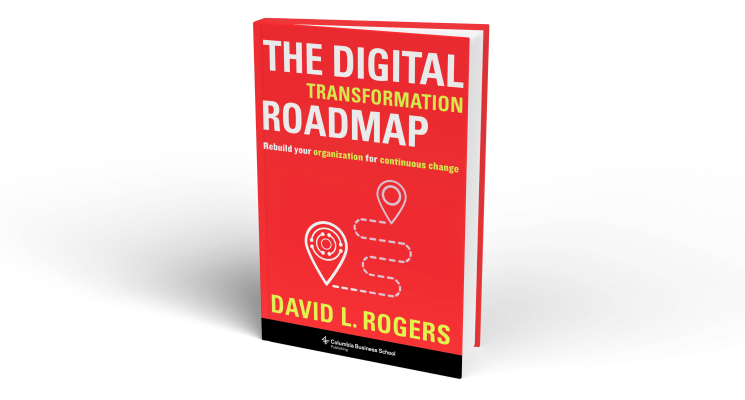
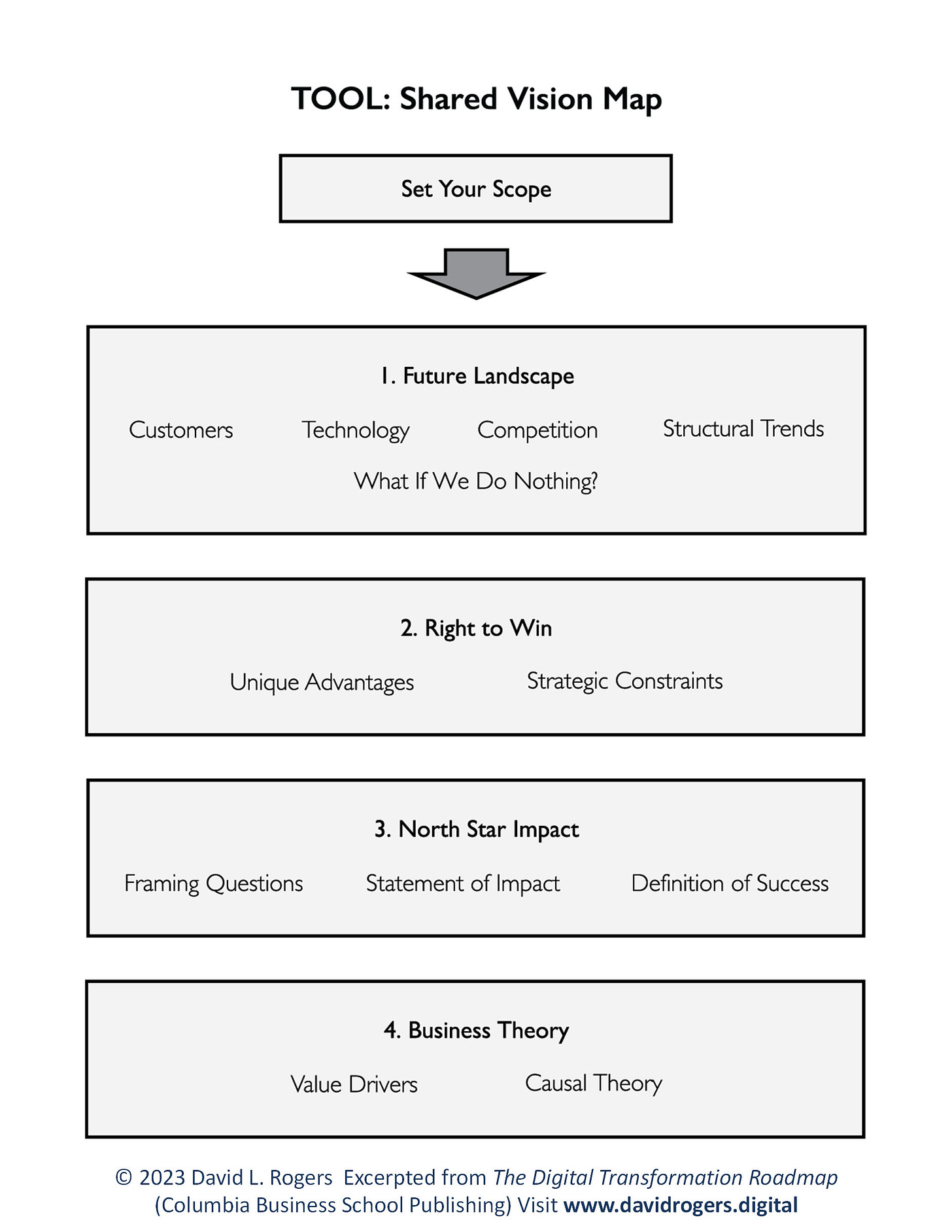
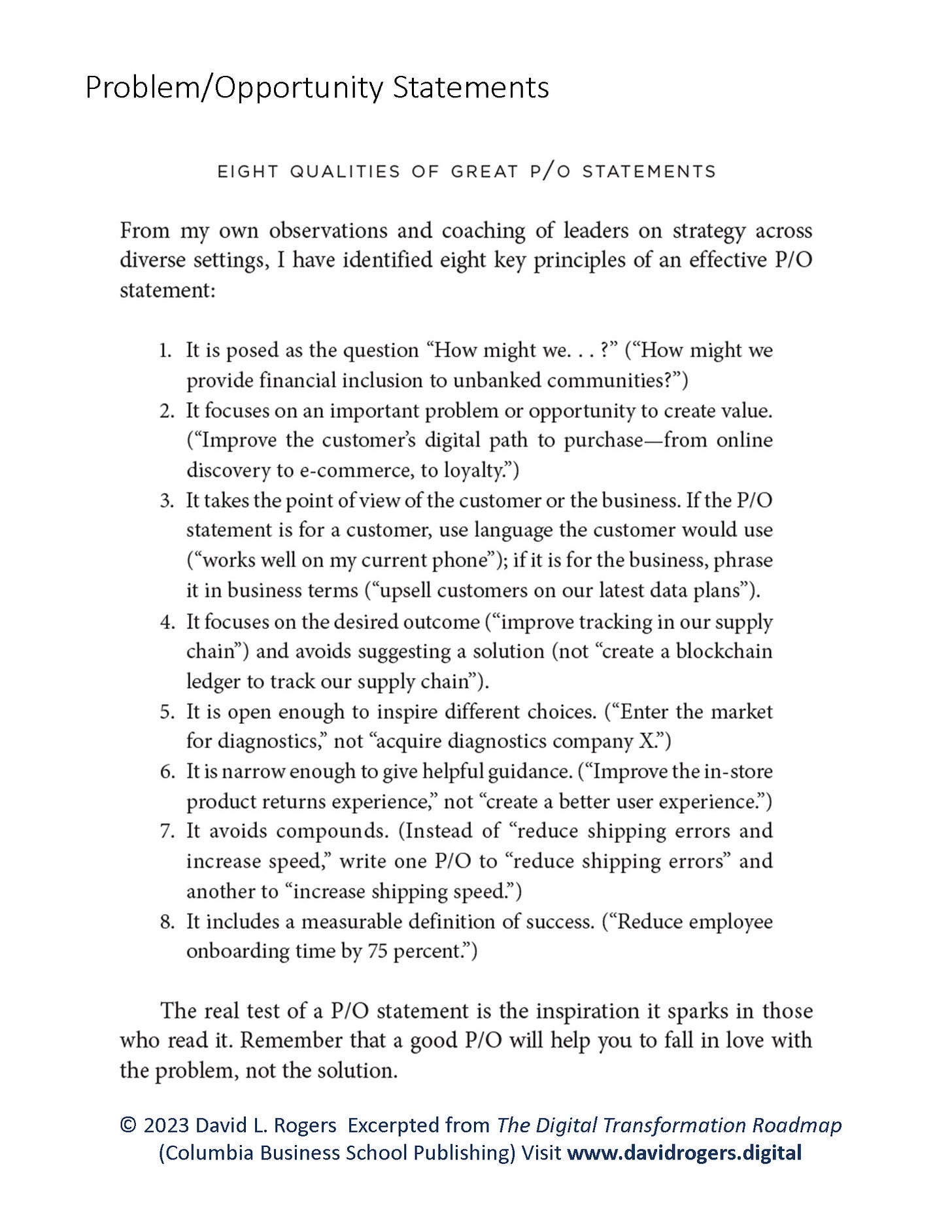
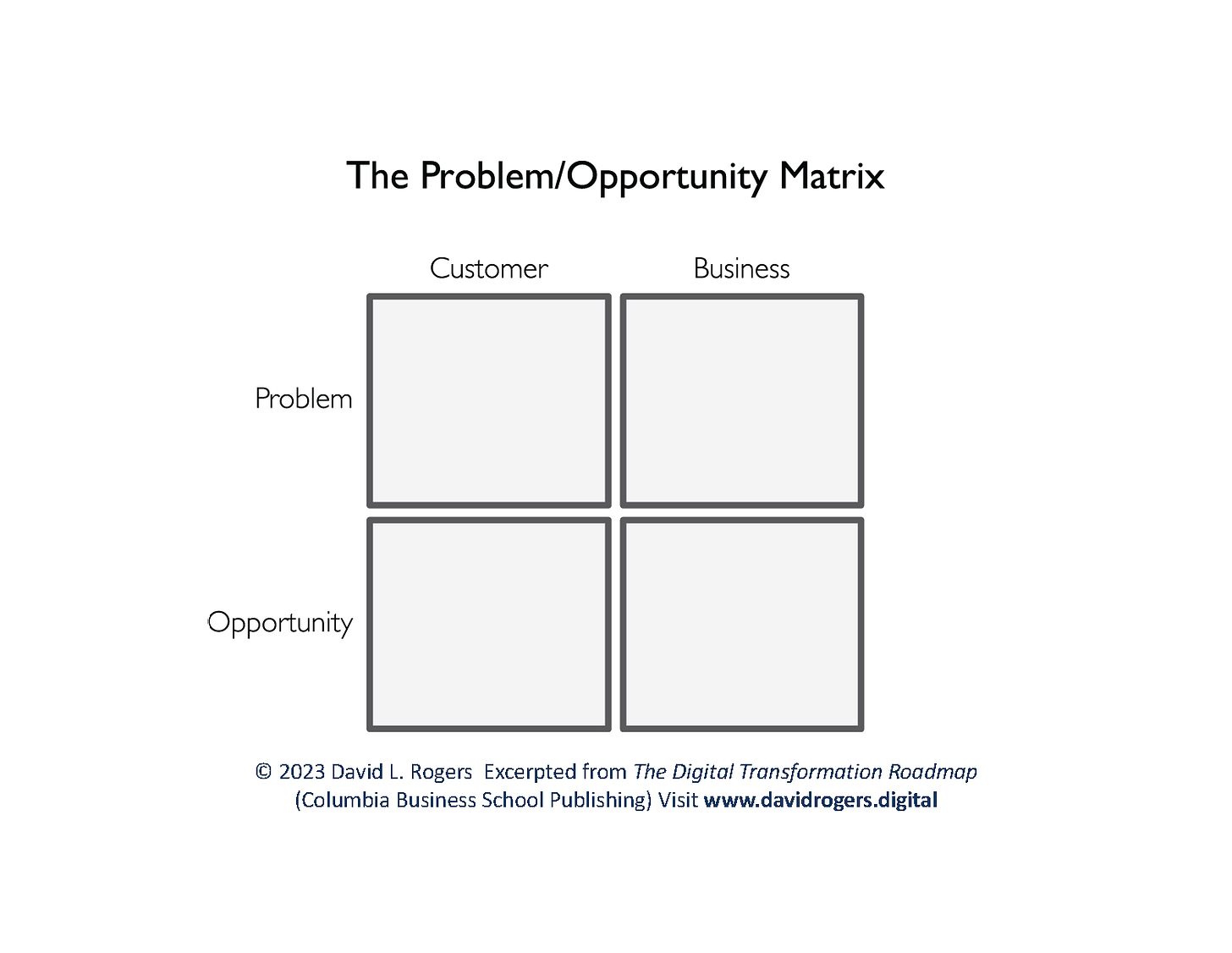
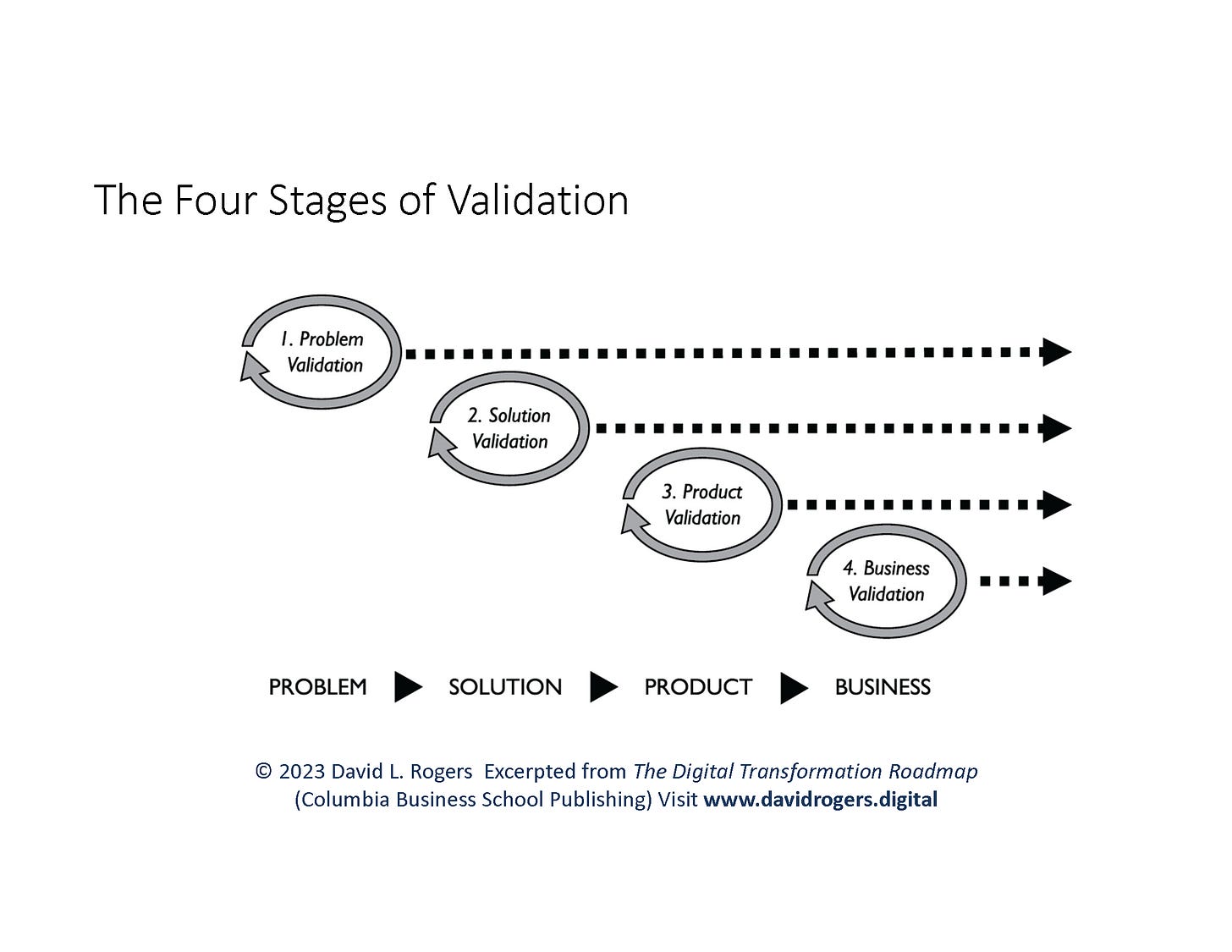
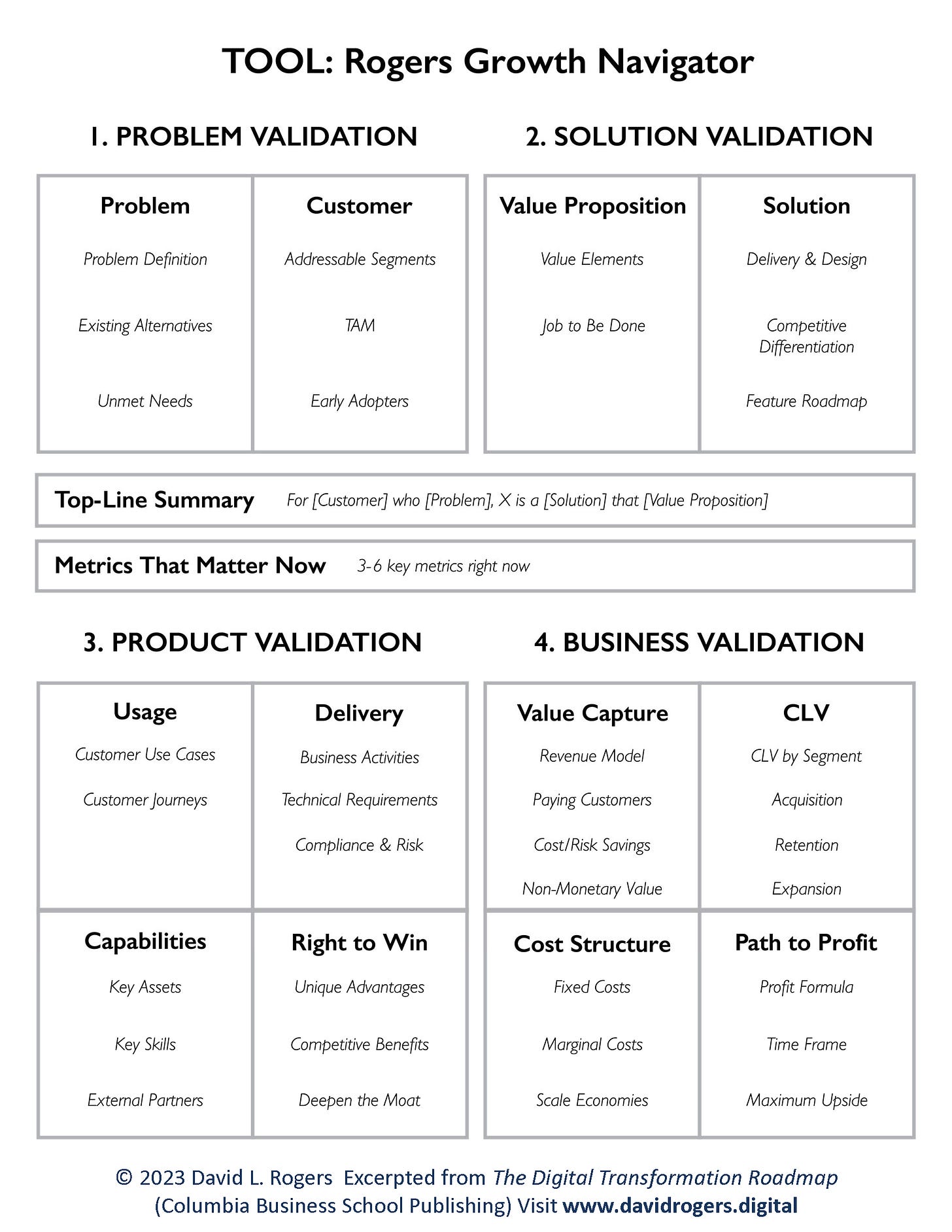
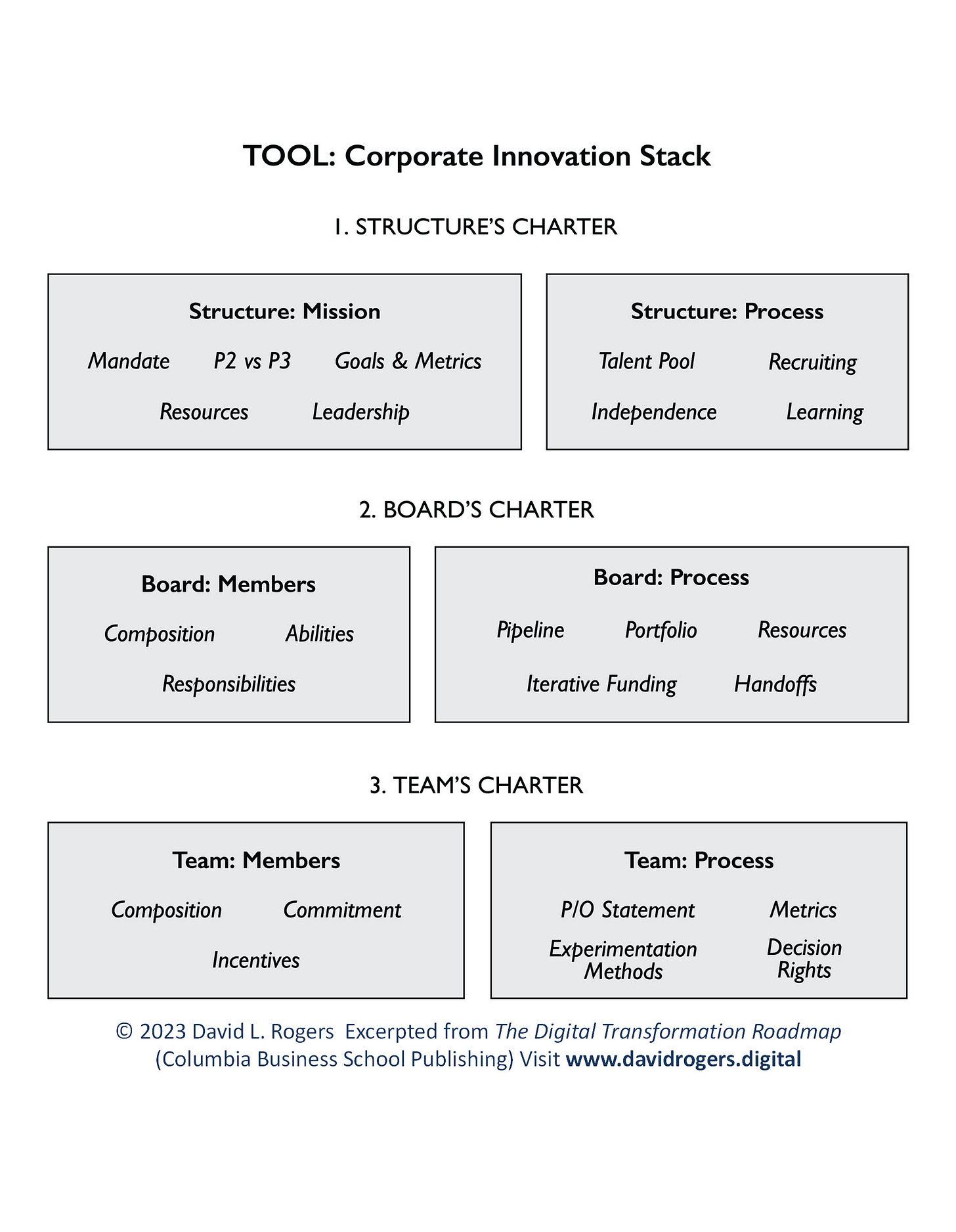
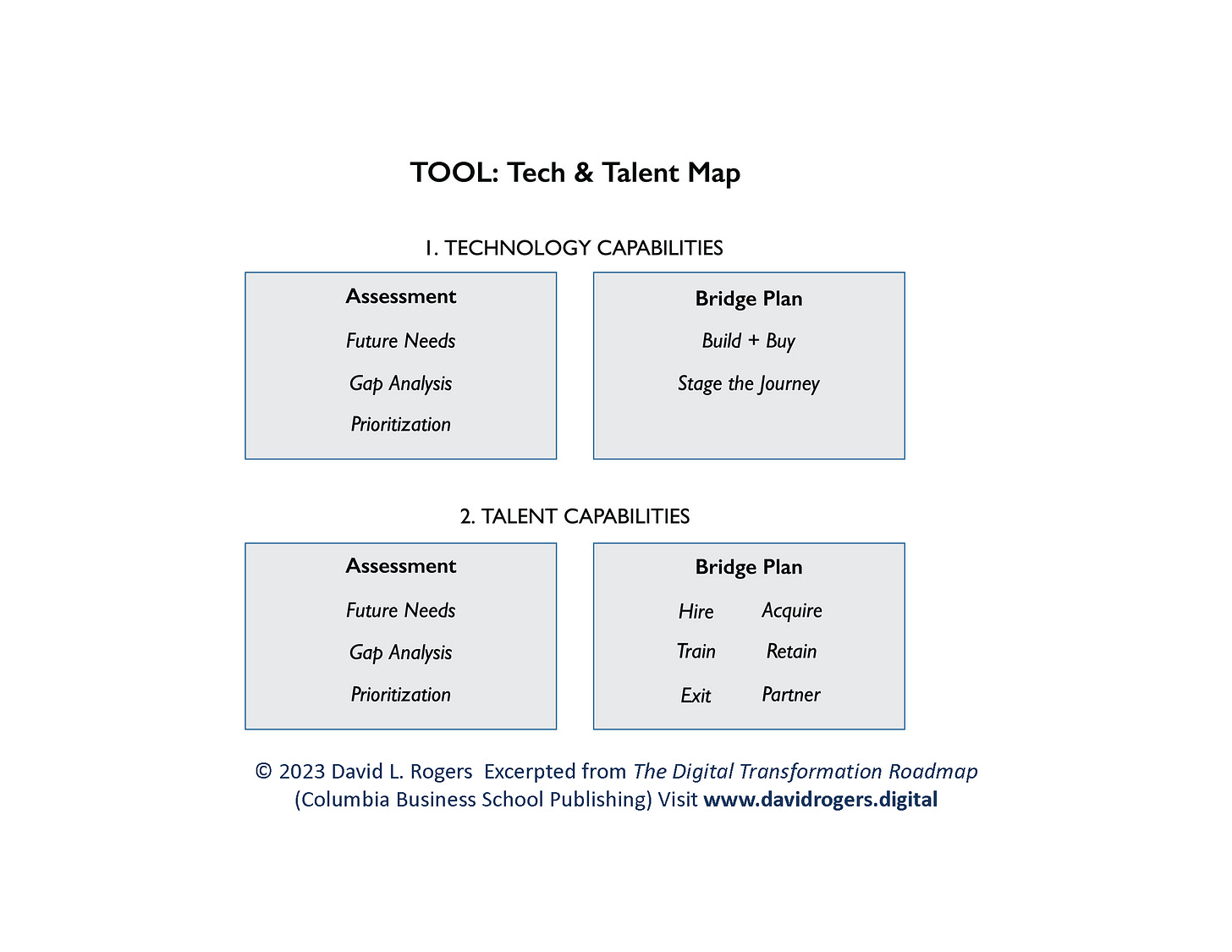
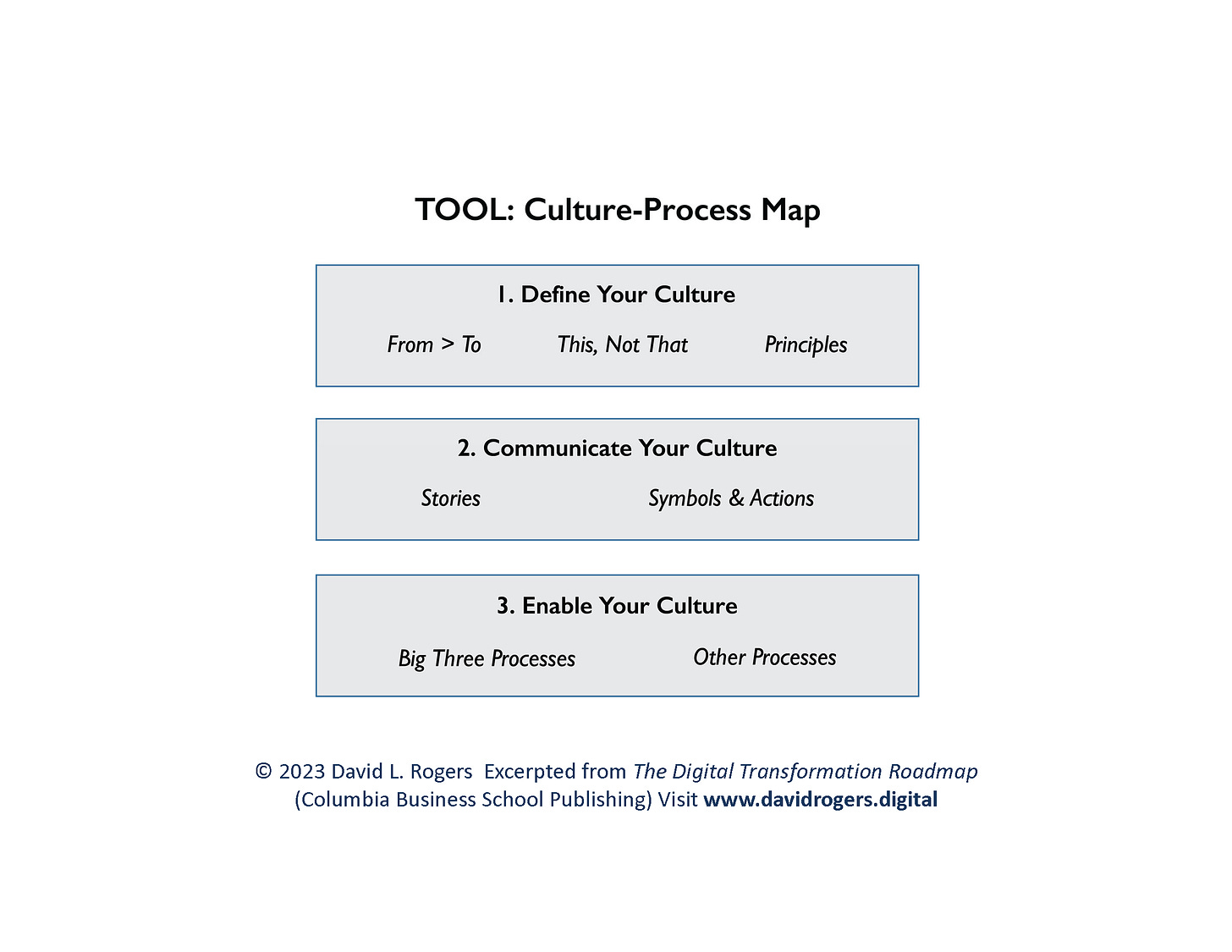
Hello David, thanks for your blog. As always, it's very clarifiying.
I would suggest another type of Tutorial that could show the relationship beetween the DX Roadmap and the DX Playbook.
In my case, I thought that the Playbook helps organization to establish an strategy, but I found in the Roadmap several strategic-related tools in addition to the roadmap-related.
Maybe some tutorial(s) to shows how to use the tools from your books would be really helpful for your followers.
Thanks in advance for your time.
Regards,
Victor